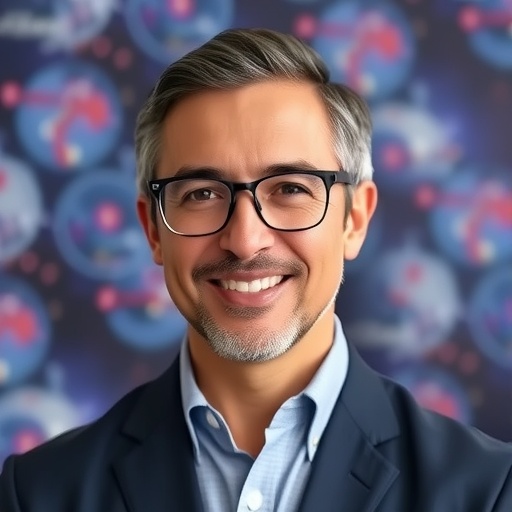In an exciting advancement for cancer therapeutics and cellular stress biology, a groundbreaking study has unveiled how WEE1 inhibitors activate a critical cellular survival pathway known as the integrated stress response (ISR) through the kinase GCN2. Published in Nature Communications, this research not only expands our understanding of the molecular consequences of WEE1 inhibition but also provides a compelling rationale for combining WEE1 inhibitors with ISR modulators in future therapeutic strategies.
WEE1 kinase is a pivotal regulator of cell cycle progression, particularly known for its role in controlling the G2/M checkpoint by inhibiting cyclin-dependent kinase 1 (CDK1). Pharmacological inhibitors of WEE1 have garnered substantial attention as anticancer agents due to their ability to force premature mitotic entry, which selectively kills rapidly proliferating tumor cells. However, the cellular repercussions beyond cell cycle control have remained incompletely understood until now.
The study, led by Tjeerdsma, Ng, Roorda, and colleagues, reveals that inhibition of WEE1 triggers activation of GCN2, a kinase traditionally recognized as a sensor of amino acid deprivation and an initiator of the ISR. The integrated stress response is a conserved signaling network that adjusts cellular metabolism and protein synthesis in response to various stresses, thereby promoting survival or cell death depending on context. It operates through phosphorylation of the eukaryotic initiation factor 2 alpha (eIF2α), which attenuates global protein synthesis while selectively upregulating stress-responsive genes.
Mechanistically, the research team demonstrated that WEE1 inhibition generates signals mimicking nutrient stress, which in turn activates GCN2. This activation leads to phosphorylation of eIF2α and subsequent ISR engagement. Intriguingly, this link between cell cycle dysregulation and nutrient sensing pathways illustrates an underappreciated cross talk between proliferation control and adaptive stress responses.
Through a series of meticulous experiments using cancer cell lines and sophisticated molecular analyses, the investigators observed a robust increase in ISR markers following administration of WEE1 inhibitors. The surge in ISR activation was shown to be dependent on the presence of functional GCN2, as genetic ablation or pharmacological blockade of GCN2 significantly blunted the ISR induction upon WEE1 inhibition.
Furthermore, transcriptional profiling revealed upregulation of a signature set of genes typically associated with the ISR, such as CHOP and ATF4, which are well-known mediators of cellular stress adaptation and apoptosis. This suggests that WEE1 inhibitor-treated cells enter a unique metabolic state driven by GCN2 that modulates their fate.
Of clinical relevance, the study highlighted that the ISR activation contributes to a protective feedback mechanism, enabling cancer cells to survive the cytotoxic stress imposed by WEE1 inhibition. By chemically suppressing the ISR downstream of GCN2, the researchers enhanced the anti-proliferative effects of WEE1 inhibitors, underscoring a potential combinatory approach to overcome resistance.
This discovery opens exciting vistas for cancer therapy. Previous clinical trials with WEE1 inhibitors, such as adavosertib, have shown promising results but have been limited by resistance mechanisms and off-target toxicities. Targeting the ISR, or more specifically GCN2, in conjunction with WEE1 inhibition may potentiate cell killing and reduce tumor resilience.
The intricate biochemical interplay unraveled between the cell cycle kinase and stress sensor kinases also challenges the traditional paradigm of these pathways functioning in isolation. It emphasizes the need to consider broader network effects when designing targeted therapies, especially when manipulating enzymes with multifaceted cellular roles.
Beyond oncology, understanding how WEE1 inhibition co-opts nutrient sensing and stress pathways might illuminate fundamental principles of cell biology and stress adaptation. The ISR is implicated in various diseases beyond cancer, including neurodegeneration, metabolic disorders, and viral infections. Insights from this work could thus inspire diverse biomedical applications.
The authors employed advanced techniques such as phosphoproteomics, CRISPR-mediated gene editing, and state-of-the-art RNA sequencing to comprehensively dissect the molecular events following WEE1 inhibition. The combination of biochemical assays and functional genomics allowed for a robust and high-resolution mapping of the signaling cascade.
Moreover, the study contributes to the growing realization that targeting kinases involved in cell cycle control does not merely disrupt proliferation but also reshapes cellular stress landscapes. The consequent modulation of survival pathways can either undermine or enhance therapeutic efficacy, depending on the compound and context.
As the field moves forward, the identification of biomarkers reflecting ISR activation status in patient tumors could guide precision medicine strategies. Monitoring GCN2 activity and ISR readouts might enable clinicians to predict responsiveness to WEE1 inhibitors or design rational combinations with ISR blockers.
This research stimulates provocative questions about whether other cell cycle kinases similarly influence stress responses and whether these interactions can be exploited to synergistically sensitize tumors to chemotherapy or radiation. The notion that cell cycle checkpoints are integrated with metabolic adaptation networks may revolutionize cancer biology paradigms.
Finally, the therapeutic implications extend beyond cancer. Drugs modulating the ISR are being investigated for neuroprotective effects and treatment of protein misfolding diseases. Understanding that WEE1 inhibitors inadvertently activate the ISR signals caution but also opportunity to refine such treatments for maximal benefit with minimal adverse consequences.
In summary, this landmark study by Tjeerdsma, Ng, Roorda, and their collaborators uncovers a novel connection between WEE1 inhibition and GCN2-mediated ISR activation, enriching our molecular toolkit to comprehend and combat cancer. The elegant biochemical dissection sets the stage for next-generation therapies that strategically combine cell cycle and stress response modulation to overcome tumor survival tactics. As the field digests these insights, one thing remains clear: the interplay between cell division control and cellular stress responses is a fertile ground for both basic discovery and clinical innovation.
Subject of Research:
The molecular mechanisms by which WEE1 kinase inhibitors activate the integrated stress response via GCN2 in cancer cells.
Article Title:
WEE1 inhibitors trigger GCN2-mediated activation of the integrated stress response.
Article References:
Tjeerdsma, R.B., Ng, T.F., Roorda, M. et al. WEE1 inhibitors trigger GCN2-mediated activation of the integrated stress response. Nat Commun (2025). https://doi.org/10.1038/s41467-025-66514-0
Image Credits: AI Generated
Tags: cancer therapeutics advancementscell cycle regulation in cancercellular stress biologycyclin-dependent kinase 1 inhibitionGCN2 kinase activationintegrated stress responseISR modulators in cancer treatmentmolecular consequences of WEE1 inhibitionpharmacological inhibitors of WEE1premature mitotic entry in tumor cellstherapeutic strategies for cancerWEE1 inhibitors





